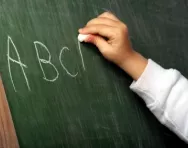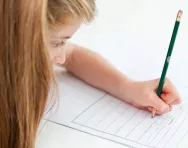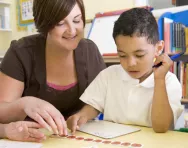Important update from TheSchoolRun
For the past 13 years, TheSchoolRun has been run by a small team of mums working from home, dedicated to providing quality educational resources to primary school parents. Unfortunately, rising supplier costs and falling revenue have made it impossible for us to continue operating, and we’ve had to make the difficult decision to close. The good news: We’ve arranged for another educational provider to take over many of our resources. These will be hosted on a new portal, where the content will be updated and expanded to support your child’s learning.
What this means for subscribers:
- Your subscription is still active, and for now, you can keep using the website as normal — just log in with your usual details to access all our articles and resources*.
- In a few months, all resources will move to the new portal. You’ll continue to have access there until your subscription ends. We’ll send you full details nearer the time.
- As a thank you for your support, we’ll also be sending you 16 primary school eBooks (worth £108.84) to download and keep.
A few changes to be aware of:
- The Learning Journey weekly email has ended, but your child’s plan will still be updated on your dashboard each Monday. Just log in to see the recommended worksheets.
- The 11+ weekly emails have now ended. We sent you all the remaining emails in the series at the end of March — please check your inbox (and spam folder) if you haven’t seen them. You can also follow the full programme here: 11+ Learning Journey.
If you have any questions, please contact us at [email protected]. Thank you for being part of our journey it’s been a privilege to support your family’s learning.
*If you need to reset your password, it will still work as usual. Please check your spam folder if the reset email doesn’t appear in your inbox.
How does dyslexia impact on a child's learning?

When your child begins to learn to read and write at primary school, their dyslexia will become more evident in their school work. Having dyslexia means that your child will take longer to do written work, or take notes, because they may have problems with processing rapid language.
Children with dyslexia often find school life challenging.
The report Identifying and Teaching Children and Young People with Dyslexia and Literacy Difficulties by Sir Jim Rose, a review that aimed to help improve provisions for dyslexic children, stated: “Dyslexia is a learning difficulty that primarily affects the skills involved in accurate and fluent word reading and spelling.
Characteristic features of dyslexia are difficulties in phonological awareness, verbal memory and verbal processing speed. Co-occurring difficulties may be seen in aspects of language, motor co-ordination, mental calculation, concentration and personal organisation.”
Dyslexic children also often have trouble with other aspects of learning, including distinguishing left from right, remembering the order of days of the week, and telling the time, as well as having difficulty with practical activities such as tying shoe laces or getting dressed. These difficulties can cause a dyslexic child to experience a lack of self-esteem.
According to Allison Quill of BrightMinds, children with dyslexia may experience difficulties at school because they don’t feel like the other children in their class. “They may feel that they are different to the others in their class when working, therefore they may not enjoy certain aspects of school and may have difficulty achieving their full potential either socially or academically,” Allison explains. “Children with dyslexia find subjects like literacy really difficult and often get frustrated.”
What can parents do to help with dyslexia learning problems?
Working with your child to support their learning both at school and at home can help to increase their feelings of self worth and confidence by letting them know that they are supported.
Allison gives this advice:
- Work with your child at their own pace. Don’t put any pressure on them, but give plenty of praise and encouragement.
- When reading with your child, remember that children with dyslexia find it hard to read black print on a white background so using coloured films laid over the page can make it easier for them to read.
- Work with your child to improve their handwriting, ensuring it is joined.
- Practise spelling patterns and avoid teaching your child to spell words by rote as they won't record them accurately.
- Use handwriting resources such as big pens, paints, crayons and different coloured paper for your child to write on.
- Do plenty of reading aloud together.
- Encourage your child to develop an awareness of time by using an egg timer.
- Multisensory learning is very important. If your child struggles with words, try pictures, music, cartoons, making a game or using art to develop a concept.
For more in-depth advice, we have specific articles on helping dyslexic children with reading, supporting dyslexic kids' writing and how to help dyslexic children with spelling.
Dyslexia support: parents and schools
Developing a good relationship with your dyslexic child’s school is vital, as good communication between you, the school’s SENCO, and your child’s class teacher will help to ensure that your child gets the best learning experience for them. “It is important to foster good relationships with the school and teacher,” says Allison. “Follow the school's home-school agreement. Support your dyslexic child’s learning in school by helping them to complete their homework, reading together regularly, practising times tables, and researching topics.”
The Made by Dyslexia video below offers some practical suggests about inclusive, dyslexia-friendly classrooms.









